There are many possible causes for white tongue, and in some cases, it comes with an unpleasant odor and mouth dryness. To get rid of it, sometimes you just need to brush your teeth. But what should you do if that doesn’t help?
❗ This article is for informative purposes only and can’t replace the advice of a specialist.
What white tongue is
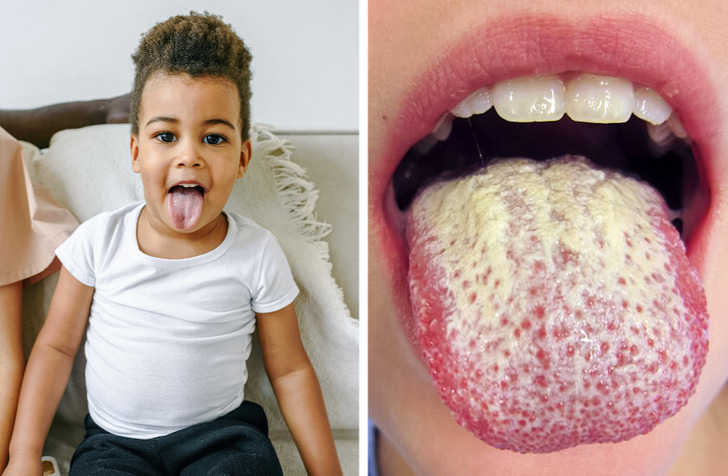
The white film may cover the entire tongue, part of it, or appear as spots. At the same time, an unpleasant odor and taste in the mouth may appear. It looks as if there are small white hairs on the tongue’s surface. In fact, they are buds covered with organic particles, bacteria, and dead cells.
White plaque on the tongue (which can also be yellow) may appear for different reasons, like due to irritation or because of an infection. It usually disappears after several days. If the situation doesn’t change for several weeks, and it’s painful to eat and talk, it’s best to see a doctor.
It’s important to note that the plaque may not only be white. While a pink tongue is normal, a brown tongue means the person drinks too much coffee or tea. A yellow tongue means there’s something wrong with the liver, and a red tongue is a sign that the person lacks vitamin B.
Why the tongue becomes white
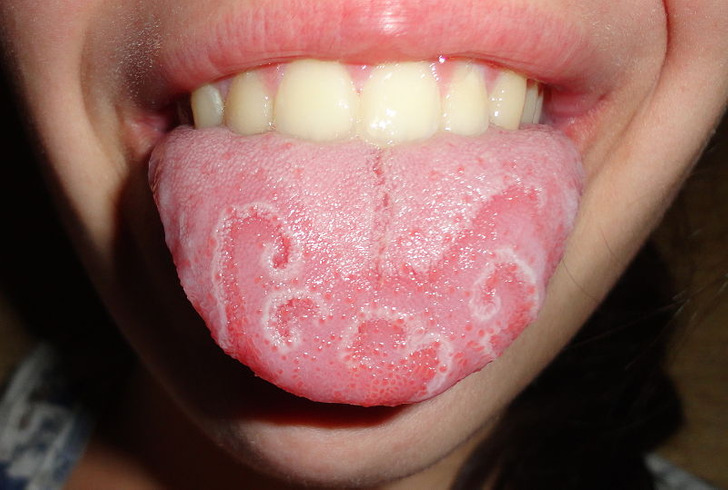
Usually, the tongue becomes white due to bacteria, leftover bits of food, or dead cells that get stuck in between the buds. Because of this, the buds may increase in size or become inflamed. This is how white spots on the tongue’s surface appear.
Sometimes, the plaque appears due to an illness. For example, the geographic tongue is also a condition where white spots appear on the tongue. It’s quite rare, and the causes are unknown, but the condition itself is often connected to eating foods that irritate the tongue. It may also be a reaction to stress, an illness, or hormonal changes.
Why white plaque appears on the tongue
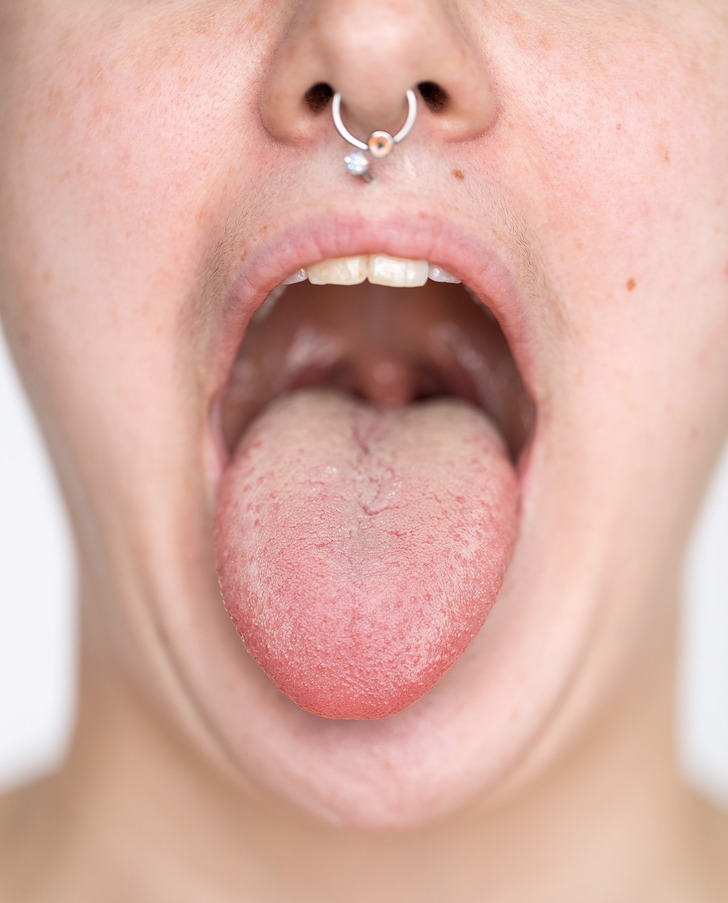
There are some things that make the appearance of white plaque on the tongue more probable:
- Age
- Taking antibiotics (white-yellow plaque appearing when there’s a fungal infection in the mouth)
- A diet that’s lacking enough fruits, vegetables, vitamin B12, and iron
- A weak immune system
- Bad mouth hygiene
- Dental prosthetics or other objects that can damage the tongue
- Dehydration and mouth dryness
What piercings have to do with white tongue
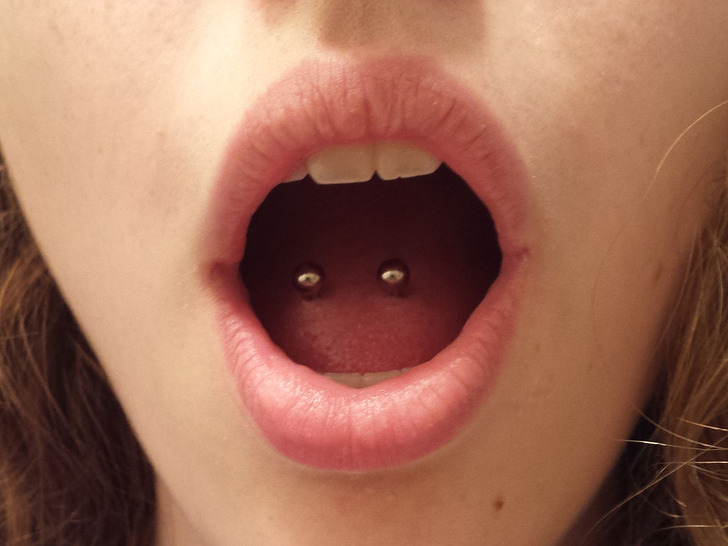
Right after piercing the tongue, there might be some white film present. This happens because the number of bacteria on the tongue increases, and it’s normal. Antibacterial mouthwash will help you get rid of it. Plus, there might be a ring around the piercings, which is normal too, and it means the tissue is healing.
If the plaque appears due to an injury (including piercings), the healing should take around 1.5 weeks. You should avoid irritants, such as hot, spicy, or sour foods and drinks.
How to get rid of white tongue at home
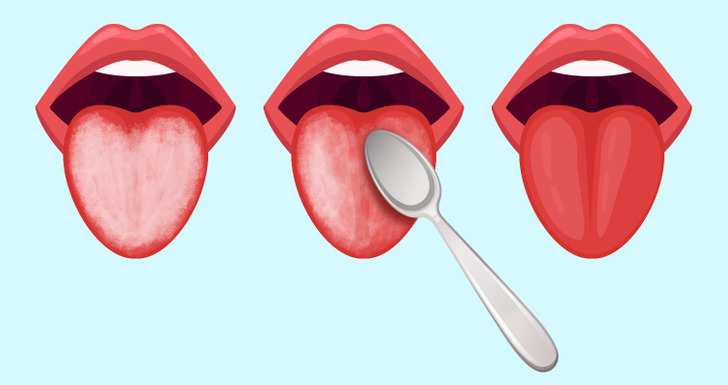
- Practice good mouth hygiene.
- Drink enough water.
- Brush your teeth using a soft toothbrush.
- Use a mild fluoride toothpaste — one that doesn’t contain sodium lauryl sulfate.
- Use fluoride mouthwash.
- Brush your tongue or use a tongue scraper to remove the white coating.
- Drink cold drinks through a straw.
- Avoid food and drinks that are spicy, salty, acidic, or very hot in temperature.
Who to talk to if you’re worried about your white tongue
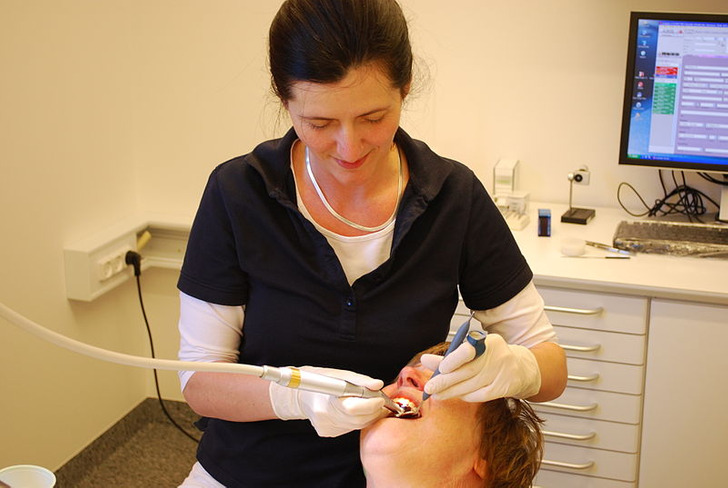
- Your dentist can help you remove the white film from the tongue and prescribe medications if needed.
- Your GP can diagnose the tongue, prescribe you certain medications and determine if the white tongue is an indicator of a more serious issue.
What do you do about white tongue?
Preview photo credit Genusfotografen (genusfotografen.se) & Wikimedia Sverige (wikimedia.se) / Wikimedia Commons, CC BY-SA 4.0, Martanopue / Wikimedia Commons, CC BY-SA 3.0
A lot of people had a crush on her in the 1980s, but look at her now…

After her breakout role in “Crocodile Dundee”, Linda Kozlowski found herself thrust into the international spotlight. Starring opposite Paul Hogan, the film marked a significant milestone in her career trajectory. However, following the “Dundee” series and a handful of other projects, Kozlowski gradually veered away from the glitz and glamor of Hollywood.
Hailing from Fairfield, Connecticut, Linda Kozlowski was born on January 7, 1958, with aspirations of treading the boards. She pursued her passion for acting by enrolling in the prestigious theater program at the Juilliard School. Upon graduating in 1981, she made her mark in various off-Broadway productions before transitioning to minor roles on Broadway and television. Notably, she starred alongside Dustin Hoffman in the television movie “Death of a Salesman”, marking a significant milestone in her career.

Linda’s path to fame wasn’t without its hurdles. Following her stint as a waitress post-“Death of a Salesman”, she relocated to California. It was there, under the wing of her mentor Dustin Hoffman and his wife, that Linda found refuge in their Malibu beach house. It was from this humble abode that Linda embarked on an audition that would alter the course of her life.

Dustin Hoffman’s endorsement landed Linda the coveted role of Sue Charlton in “Crocodile Dundee”, a character she portrayed with aplomb. The film’s astronomical success, raking in over $320 million against a $10 million budget, catapulted Linda Kozlowski into stardom virtually overnight. Interestingly, her fame initially soared in Australia due to the film’s early release there.

Despite her newfound celebrity status, Linda felt somewhat overlooked in Hollywood. While she reprised her role in the “Crocodile Dundee” sequels, she declined numerous offers for roles that pigeonholed her as the quintessential girlfriend of a comedic lead. Ultimately, Linda decided to bid adieu to acting after the third installment of “Dundee”.

In her personal life, Linda Kozlowski found love on set with her co-star Paul Hogan during the “Crocodile Dundee” series. They tied the knot in 1990 and welcomed their son, Chance, in 1998. However, their marriage dissolved in 2014. Following her divorce from Paul Hogan, Linda received a substantial settlement, empowering her to chart her own course. She turned her gaze towards Morocco, where she crossed paths with Moulay Hafid Baba, a native tour guide, sparking a profound life transformation.

Together, Linda and Moulay Hafid Baba founded the luxury travel agency Dream My Destiny in Marrakech. Crafting bespoke travel experiences tailored to their clients’ desires became their passion. Linda seamlessly transitioned from the glitz of Hollywood to the enchanting vistas of Morocco.

While Linda Kozlowski may have bid farewell to the silver screen, her legacy as Sue Charlton in “Crocodile Dundee” endures. At 63, she embraces her adventurous spirit and finds fulfillment in her new life in Morocco. She believes that reality surpasses fiction, channeling her intuition honed during her acting career into curating unforgettable experiences for travelers around the globe.



Leave a Reply